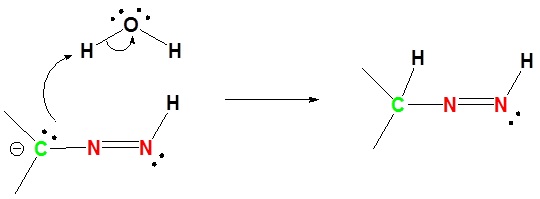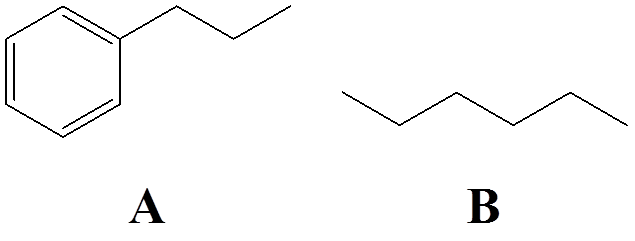21.6: Wolff-Kishner reduction
- Page ID
- 225901
\( \newcommand{\vecs}[1]{\overset { \scriptstyle \rightharpoonup} {\mathbf{#1}} } \) \( \newcommand{\vecd}[1]{\overset{-\!-\!\rightharpoonup}{\vphantom{a}\smash {#1}}} \)\(\newcommand{\id}{\mathrm{id}}\) \( \newcommand{\Span}{\mathrm{span}}\) \( \newcommand{\kernel}{\mathrm{null}\,}\) \( \newcommand{\range}{\mathrm{range}\,}\) \( \newcommand{\RealPart}{\mathrm{Re}}\) \( \newcommand{\ImaginaryPart}{\mathrm{Im}}\) \( \newcommand{\Argument}{\mathrm{Arg}}\) \( \newcommand{\norm}[1]{\| #1 \|}\) \( \newcommand{\inner}[2]{\langle #1, #2 \rangle}\) \( \newcommand{\Span}{\mathrm{span}}\) \(\newcommand{\id}{\mathrm{id}}\) \( \newcommand{\Span}{\mathrm{span}}\) \( \newcommand{\kernel}{\mathrm{null}\,}\) \( \newcommand{\range}{\mathrm{range}\,}\) \( \newcommand{\RealPart}{\mathrm{Re}}\) \( \newcommand{\ImaginaryPart}{\mathrm{Im}}\) \( \newcommand{\Argument}{\mathrm{Arg}}\) \( \newcommand{\norm}[1]{\| #1 \|}\) \( \newcommand{\inner}[2]{\langle #1, #2 \rangle}\) \( \newcommand{\Span}{\mathrm{span}}\)\(\newcommand{\AA}{\unicode[.8,0]{x212B}}\)
Aldehydes and ketones can be converted to a hydrazine derivative by reaction with hydrazine. These “hydrazones” can be further converted to the corresponding alkane by reaction with base and heat. These two steps can be combined into one reaction called the Wolff-Kishner Reduction which represents a general method for converting aldehydes and ketones into alkanes. Typically a high boiling point solvent, such as ethylene glycol, is used to provide the high temperatures needed for this reaction to occur. Note! Nitrogen gas is produced as part of this reaction. Formation of the strong N=N triple bond provides the driving force for the reaction. 








Reaction of Aldehydes or Ketones with Hydrazine Produces a Hydrazone

Reaction with a Base and Heat Converts a Hydrazone to an Alkane

Both Reactions Together Produces the Wolff-Kishner Reduction

Example

Mechanism of the Wolff-Kishner Reduction
1) Deprotonation of Nitrogen

2) Protonation of the Carbon

3) Deprotonation of Nitrogen

4) Protonation of Carbon

Problems
1) Please draw the products of the following reactions.

Answers
1)
Contributors
- Prof. Steven Farmer (Sonoma State University)
- William Reusch, Professor Emeritus (Michigan State U.), Virtual Textbook of Organic Chemistry
CC licensed content, Shared previously
- Wolff-Kishner Reduction. Authored by: Prof. Steven Farmer and William Reusch. Provided by: Chemistry LibreTexts. Located at: https://chem.libretexts.org/?title=Textbook_Maps/Organic_Chemistry/Supplemental_Modules_(Organic_Chemistry)/Aldehydes_and_Ketones/Reactivity_of_Aldehydes_%26_Ketones/Wolff-Kishner_Reduction. License: CC BY-NC-SA: Attribution-NonCommercial-ShareAlike

